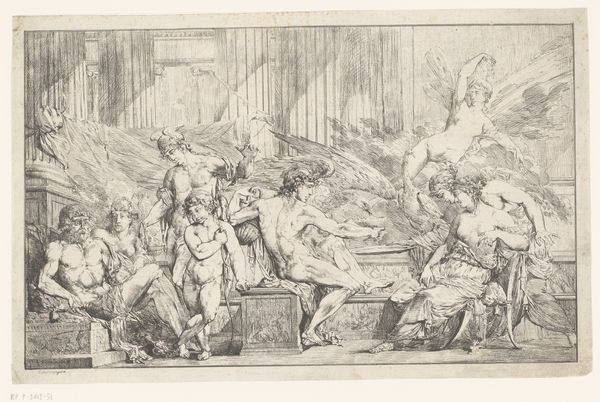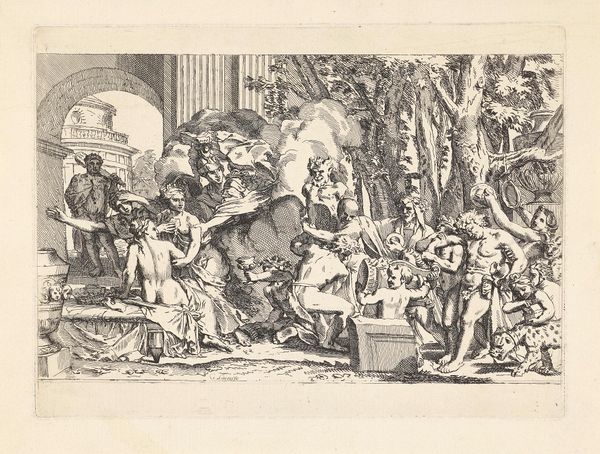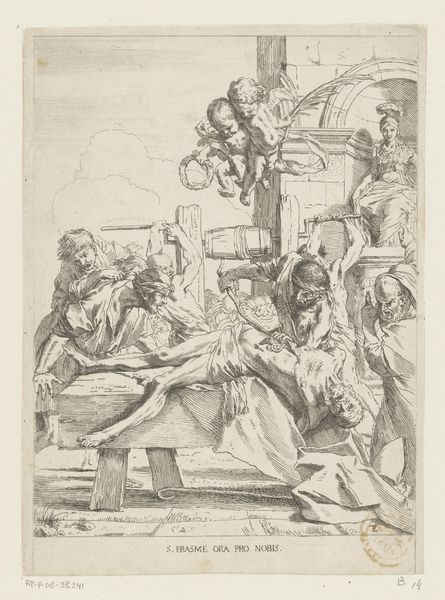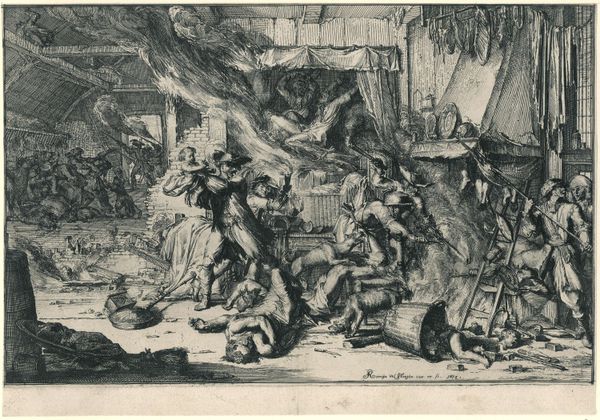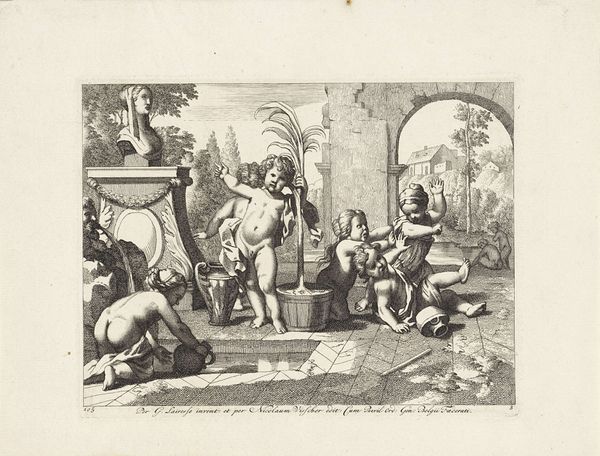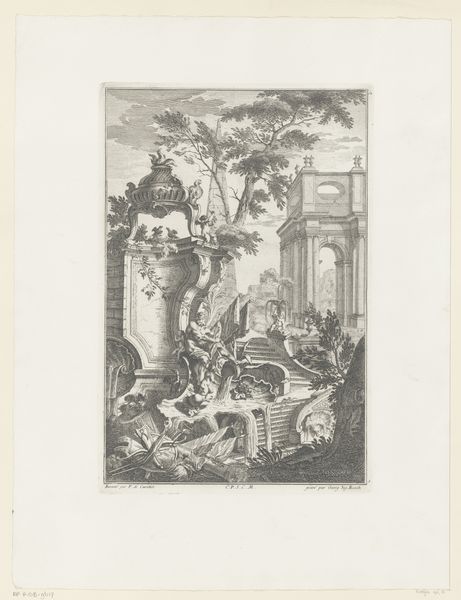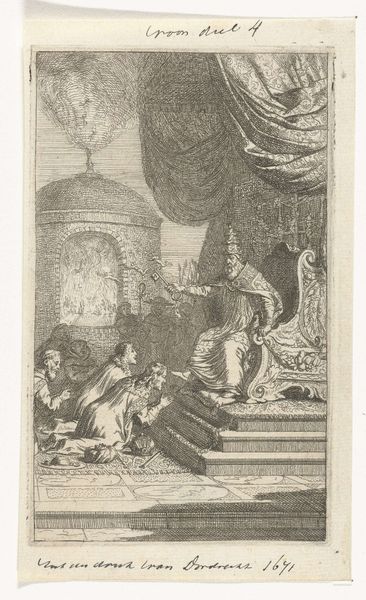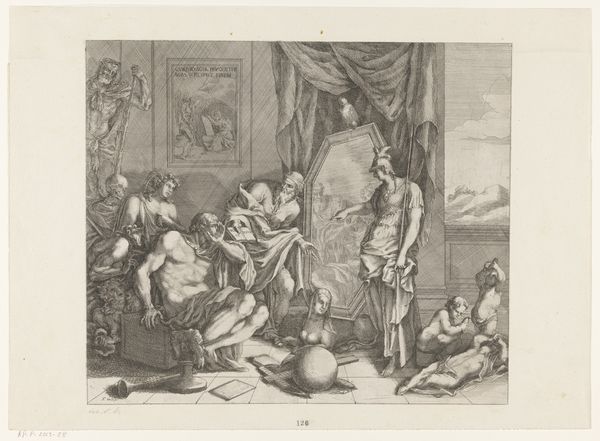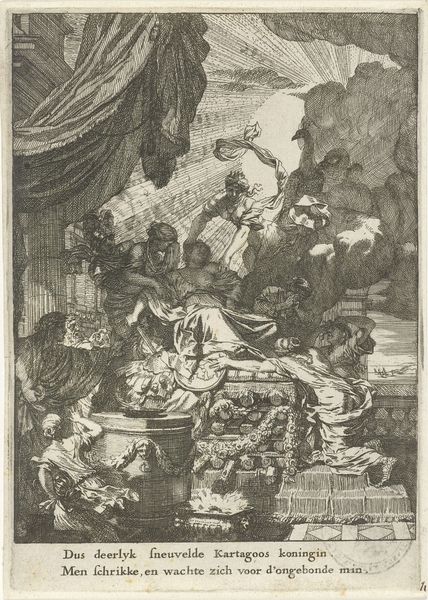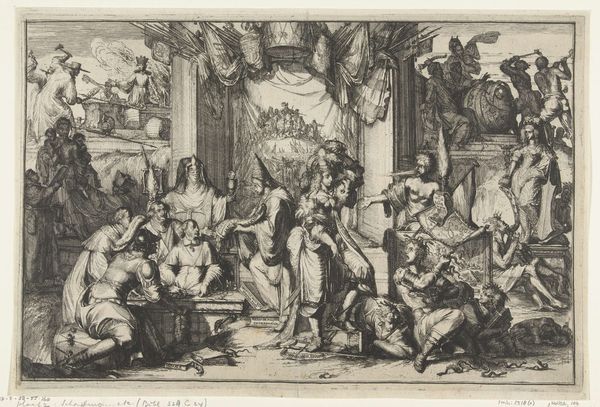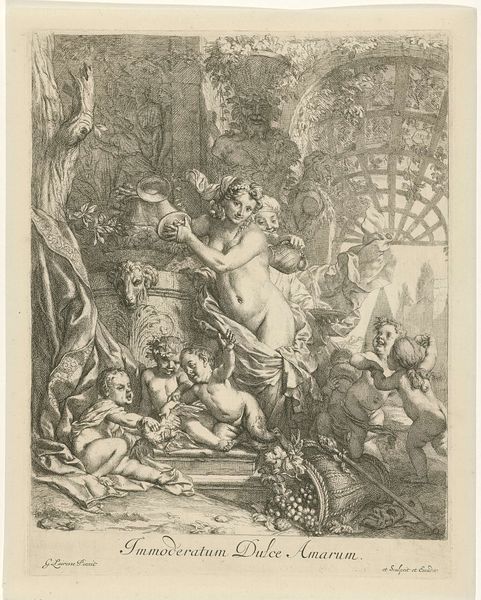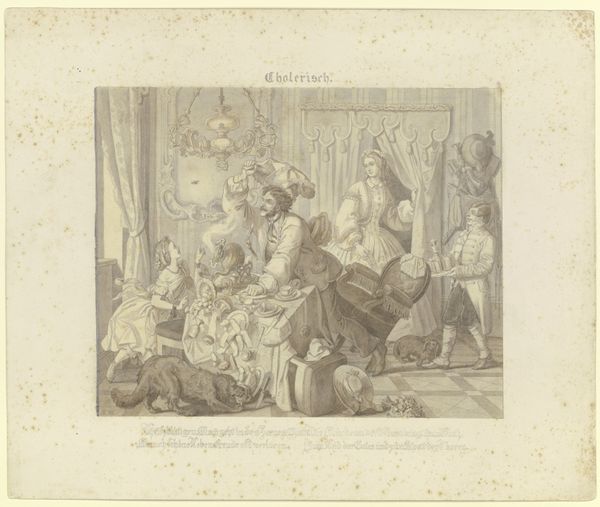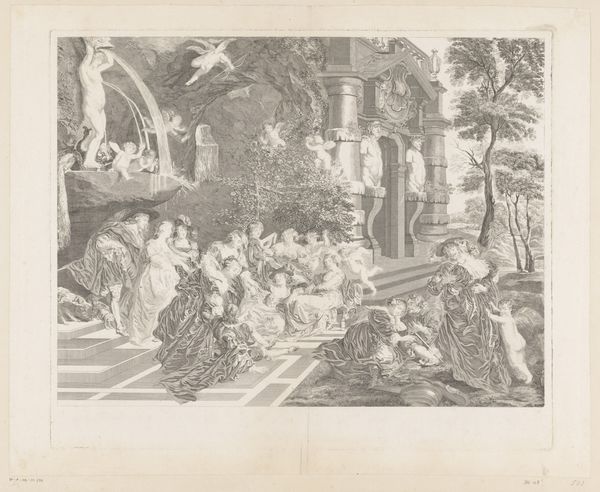
drawing, ink, pen
#
drawing
#
ink drawing
#
narrative-art
#
baroque
#
pen drawing
#
figuration
#
ink
#
pen
#
history-painting
Dimensions: height 304 mm, width 387 mm
Copyright: Rijks Museum: Open Domain
Curator: Looking at this drawing by Gerard de Lairesse, dating back to 1667, titled "Aeneas Going to Battle" one immediately gets a sense of dramatic intensity. Editor: Yes, the overall tonality is quite arresting, and the energy, although executed only with ink and pen, suggests almost bombastic movement; look at how dynamic Aeneas' pose is. Curator: De Lairesse, a painter influenced by classicism, uses pen and ink to narrate a pivotal moment. What strikes me, viewing it now at the Rijksmuseum, is not just the narrative—Aeneas leaving to fulfill his destiny—but the materials themselves. The choice of pen and ink implies widespread access and reproduction; it is not something that demands elite means for production. Editor: Precisely. The cross-hatching and linear style create such an active surface, filled with diagonals and the muscularity of the figures is masterfully captured; and look at Venus reclining on that cloud. But focusing on the medium somewhat obscures how Lairesse employs allegorical conventions to ennoble Aeneas' journey. This idealized form—a product of precise, almost mathematical arrangements—emphasizes a moment where the fates are at stake. Curator: That ennobling can't be divorced from the social and economic factors determining artistic commissions during this period; look how the act of depicting mythological heroism elevates not only the subject but the patron behind the artwork; myth here legitimizes power structures. Pen and ink democratized reproduction but could still be deployed to shore up hierarchical social arrangements. Editor: Yet within that system, there's this incredible sophistication in how the figures interact with space. The receding architecture, and those carefully orchestrated gestures—it’s a compositional marvel in expressing narrative through purely formal elements. Curator: So ultimately, by viewing the materials and the subject matter through the lens of 17th century society, one can understand the complex interaction of material production and the creation of ideology, while appreciating De Lairesse's obvious craftsmanship. Editor: Indeed. Examining those intricacies really deepens the experience of appreciating its enduring artistic achievements in terms of arrangement, tension and dramatic composition.
Comments
rijksmuseum about 2 years ago
⋮
De Lairesse’s subject matter was frequently highly idiosyncratic. This time he chose a rarely portrayed scene in the Aeneid, Vergil’s epic poem about the Trojan Aeneas. The goddess Venus, Aeneas’ mother, enjoins her son from a cloud to wage war against the Greeks. Desperate, his wife Creusa and son Ascanius, try to stop him. To no avail, naturally.
Join the conversation
Join millions of artists and users on Artera today and experience the ultimate creative platform.
